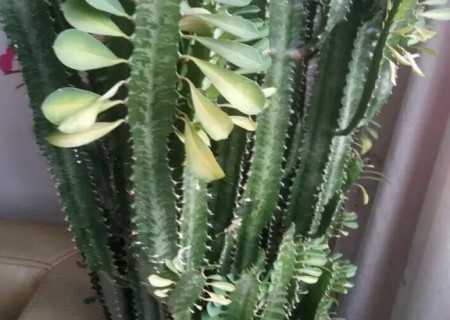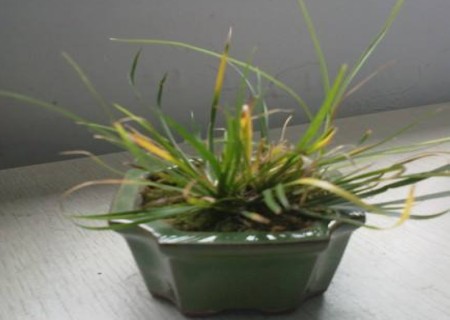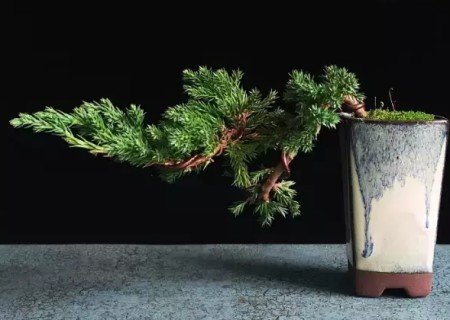What is the matter with yellow leaves?
Dragon bone flower is a common flower plant, but familiar pot friends love and hate it. Love is mainly love it domineering and unique, hate is mainly hate it covered with thorns, the body also contains toxins. However, as a pot friend who likes to plant it in potted plants, love is naturally better than hate.

Dragon bone flower also has a great advantage, that is, strong adaptability to the environment, conservation management does not need to worry too much, even if it is rough culture, but also can raise it. Although maintenance management is simple, but sometimes we still find that the leaves of keel flower appear yellow phenomenon. So, what's with the yellowing of the keel leaves?
When encountering the phenomenon of yellowing leaves of keel flowers, we do not have to panic, this is just a small problem that may occur in the process of conservation and management and cause a little bad growth phenomenon. As long as we can find out the reasons and deal with them in time, we will soon return to normal, mainly in the following aspects:
1. Too much light
Although keel flowers like light, but also need to avoid long-term direct light, especially in the summer sun environment, must take shade measures, otherwise it is easy to appear yellow leaves phenomenon.
When this happens, we should immediately take shade measures for it, or move the flowerpot directly indoors near the balcony, or where it can receive scattered light.
2. Too much watering
Many plants will cause excessive watering in the basin water and let the plant appear rotten root phenomenon, if the keel flower due to excessive watering caused by long-term basin water, the same will occur rotten root phenomenon, rotten root after the most direct performance is yellow leaves.
For the phenomenon of yellow leaves caused by excessive watering, first of all, we should immediately stop watering, drain the excess water in the basin, and open the basin soil to dry excess water. Of course, it would be best if they could cut off the rotting parts of the root system. It should be noted that keel flowers are more drought-tolerant than wet-tolerant, and it is better to let them dry than to let them drown. In winter, even if it is only watered once, the keel flower will not be dried to death.
3. Excessive fertilization
Keels like loose, fertile soil, but that doesn't mean they can fertilize heavily. If the original fertilization is too much, or the concentration is too high, it is easy to cause fertilizer damage phenomenon, the same will burn the roots of the plant, and then the phenomenon of yellowing leaves.
If fertilization is too much, it should be watered once in time to dilute and remove fertilizer. At the same time, it is also a good method to pay attention to the soybean or peanut soaked and buried in the pot soil when fertilizing the keel flower, or to irrigate with soybean soaked in water.
4. Normal defoliation
If yellow leaves are found during the defoliation period, especially the older leaves below, then yellow leaves in this case are a natural occurrence in the normal metabolic process. You can ignore too much, but it is recommended to cut off the dried yellow leaves and clean up the yellow leaves falling from the basin to avoid breeding germs.
5. Caused by pests and diseases
In addition to the above reasons, the invasion of pests and diseases is also an important reason for the yellowing of leaves in keel flowers. Therefore, we should observe carefully at ordinary times. Once we find that the leaves are infected with pests, or when the plants are yellow due to illness, the young pests will be killed, and no pests will be sterilized. Carbendazim can be used according to a certain proportion of water, stir well after pouring in the roots of dragon flower can be.
Time: 2019-05-30 Click:
- Prev

What if the leaves of Acorus calamus are withered and yellow?
Acorus calamus, which seems to be clumps of ordinary weeds, comes from the mountains, especially near the water source, but it is favored by scholars and scholars. However, calamus is a kind of plant with character, and its elegant and elegant posture shows extraordinary demeanor. Put a pot of calamus bonsai on the desk, lingering fragrance among the green
- Next

Causes and control measures of yellowing of bonsai leaves of Sabina vulgaris
Sabina vulgaris, also known as Sabina vulgaris and Sabina vulgaris, is an evergreen shrub of Sabina vulgaris. The plant is low and has no erect trunk. The branches grow parallel to the ground or grow close to the ground. The trunk epidermis is smooth when young, but becomes rough for a period of time. Its branchlets grow densely, with spiny leaves and apex pointed.
Related
- Fuxing push coffee new agricultural production and marketing class: lack of small-scale processing plants
- Jujube rice field leisure farm deep ploughing Yilan for five years to create a space for organic food and play
- Nongyu Farm-A trial of organic papaya for brave women with advanced technology
- Four points for attention in the prevention and control of diseases and insect pests of edible fungi
- How to add nutrient solution to Edible Fungi
- Is there any good way to control edible fungus mites?
- Open Inoculation Technology of Edible Fungi
- Is there any clever way to use fertilizer for edible fungus in winter?
- What agents are used to kill the pathogens of edible fungi in the mushroom shed?
- Rapid drying of Edible Fungi

